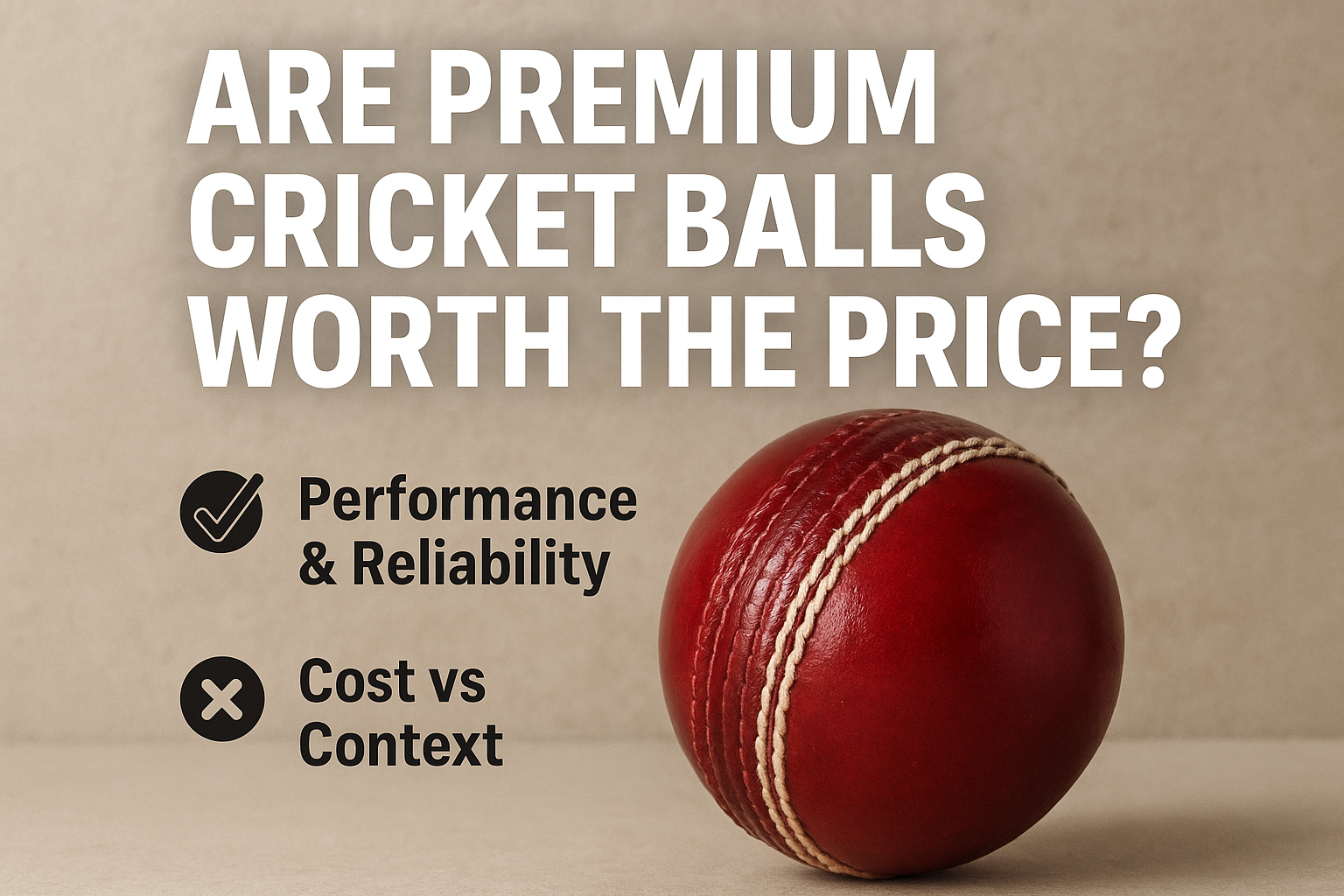Cricket is as much about the ball as it is about bat and batters — and in many ways, the ball defines the quality of play. For players, clubs, or leagues wondering whether investing in a pricey, premium leather cricket ball is justified — the answer is yes … but with caveats. It depends on how and where you play.
What Premium Balls Give You — Performance & Reliability
-
Better build: leather, seam & shape retention. Premium balls are typically made from high-grade leather, with a well-constructed cork/wool core, and hand-stitched seams. This carefully engineered construction helps the ball retain its roundness and hardness longer, which is crucial for consistent bounce and predictable behavior on pitch.
-
Superior swing, seam movement, spin & bounce. For seamers and spinners alike, the quality of the seam and leather surface can dramatically affect how the ball behaves — swing through the air, seam movement off the pitch, spin grip, even bounce. These features make a big difference in competitive matches.
-
Durability — lasts overs, not just a handful of deliveries. A good premium ball can hold up through extended spells — sometimes 50 overs or more — without losing shape or performance. That makes them ideal for long-format matches.
-
Consistency & fair play standards. Premium balls tend to behave more consistently across matches. That helps ensure fairness: batters and bowlers rely on predictable bounce, seam, and swing. For leagues, clubs, or competitive matches — that predictability is often worth the cost.
In short: if you’re playing at a competitive level — club leagues, tournaments, serious net practice — a premium ball can significantly elevate the quality of play.
When Premium Balls Might Not Be Worth It — Cost vs Context
-
Price — significantly higher than basic balls. Premium, match-grade balls cost more — the improved materials, hand-stitching, and quality control add cost. For casual or occasional players, that’s a real factor.
-
For casual games or nets, benefits are less obvious. If you're just playing informal games, backyard cricket, or short-duration net sessions, the extra swing/spin or durability may not translate into noticeable advantages. A standard or mid-range ball could be “good enough.”
-
Maintenance requirements. Leather balls often need proper care — storage away from moisture, regular cleaning/polishing to maintain shine and performance. Neglecting that reduces their lifespan.
-
Wear on rough pitches or non-ideal surfaces. On hard concrete, rough wickets, or streets, even premium leather balls can wear out quickly — reducing their value compared to cost.
So for casual play, frequent use of synthetic balls, or informal settings — a premium ball might be overkill.
When It Makes Sense to Invest — Who Should Buy Premium Balls
Based on how and where you play cricket, investing in premium balls makes sense if:
-
You’re part of a club or league that plays formal matches — where swing, bounce, seam, and fairness matter.
-
You’re a bowler (pace or spin) who relies on seam position or swing/spin to succeed. The extra grip and quality give real advantage.
-
You frequently practice nets or do long-duration training — better build quality means longer life, so over time, premium balls may even be more cost-effective than repeatedly replacing cheap balls.
-
You want consistency — especially if you are improving technique, training seriously, or preparing for competitive cricket.
My Verdict: Worth It — If You Use It Right
Yes — premium cricket balls are worth their price for serious players, clubs, and competitive cricket. They offer superior performance, consistency, and durability that cheaper balls simply can’t match.
But for casual games, street or tape-ball style cricket, or occasional play — the difference often won’t justify the cost.
If I were advising a club or a cricketer in the USA — learning the game, preparing for leagues — I’d say: go for premium if you can — it pays off in performance and longevity.
